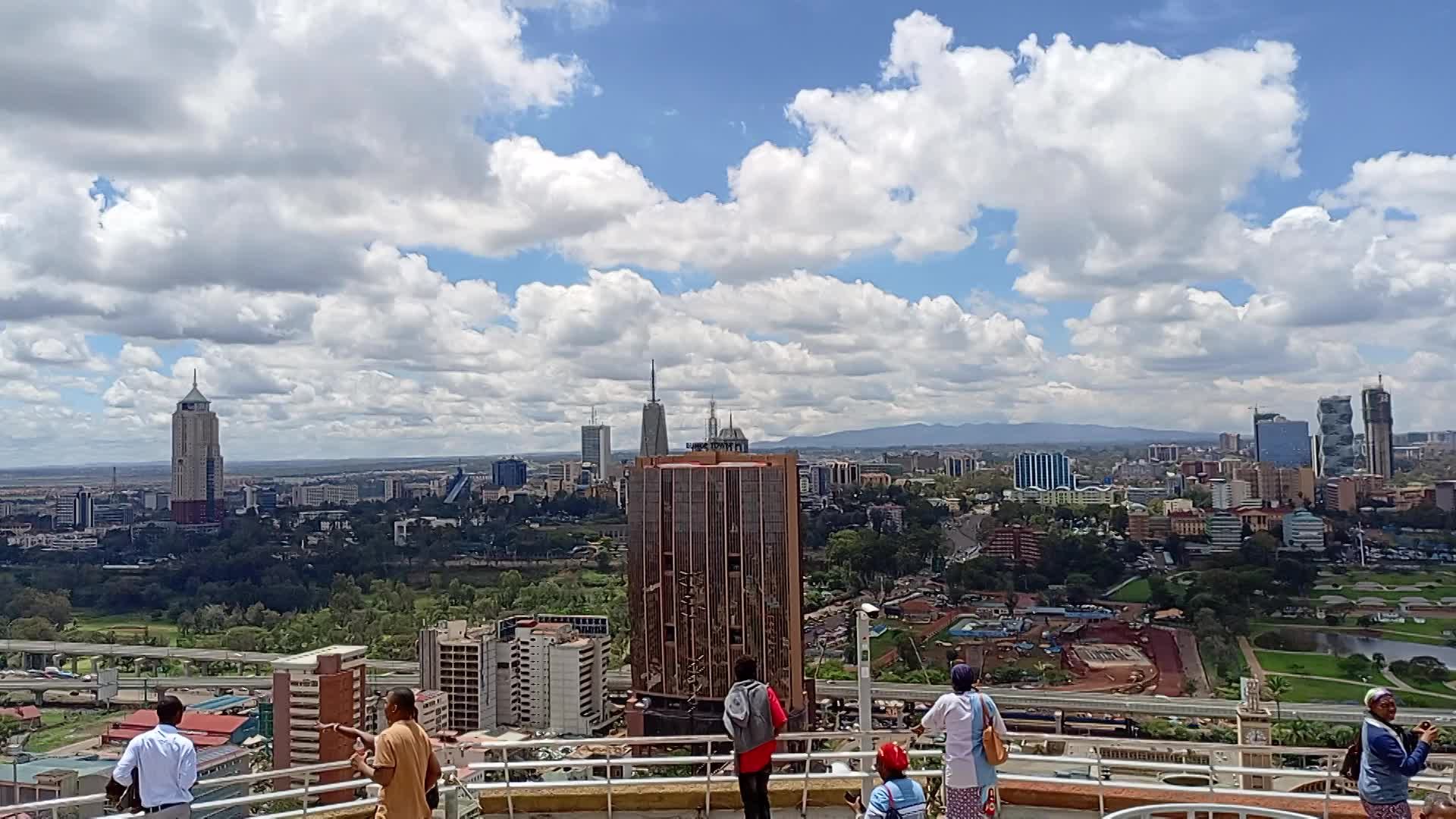360° View of Nairobi
Running was the first thing I did in the home of the long-distance champions. I kicked off my first day in Kenya with a vigorous morning run around Uhuru Gardens, situated in Langata. Speaking of Uhuru Gardens, the plan was to visit the historical site shortly after the four-kilometer run. Unfortunately, the site in question was under renovation and, therefore, temporarily closed.
After breakfast, I booked a ride and went to the towering Kenyatta International Conference Center (KICC), found in the city center. The rooftop of the iconic, 41-story building is open to both domestic and foreign tourists. I was charged a modest fee of Kshs 200 (East Africans' rate) to access Nairobi's best viewpoint. For some reason, the elevator goes up to the 37th floor. From there, I took the stairs.
Standing on the rooftop's helipad, I had an unobstructed 360° view of the whole city. As I marveled at the city's imposing skyline, my mind revisited the past and put history into perspective.
Nairobi was originally a swampy wildlife habitat. The name Nairobi itself is derived from the Maasai phrase Enkare Nairobi, which means cool waters. The stream that flows through the city was later named Nairobi River.
The transformation of the swamp into a settlement began during the construction of the Mombasa - Kampala railway line in the late 1890s. This happened when Sir George Whitehouse chose the location for the project's depot, shunting ground and camp.
The British East Africa Protectorate's administration moved the capital from Mombasa to Nairobi in 1905. When Kenya gained independence in 1963, Nairobi became the capital of the newly independent republic. Today, Nairobi is home to more than 4 million people and one of the most prominent commercial hubs in sub-Saharan Africa. Modern Nairobi has a cosmopolitan flair with a fusion of African, Asian, Western and Middle Eastern cultures.
